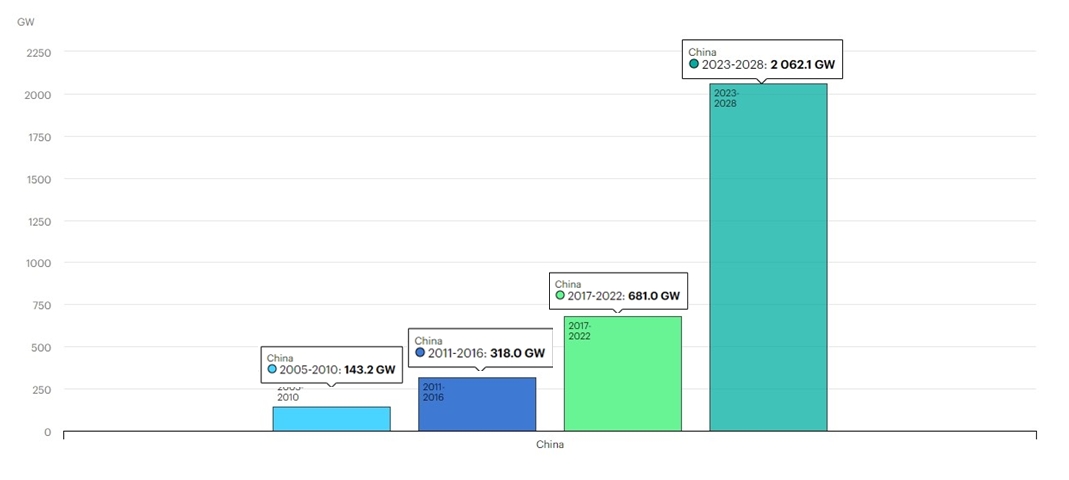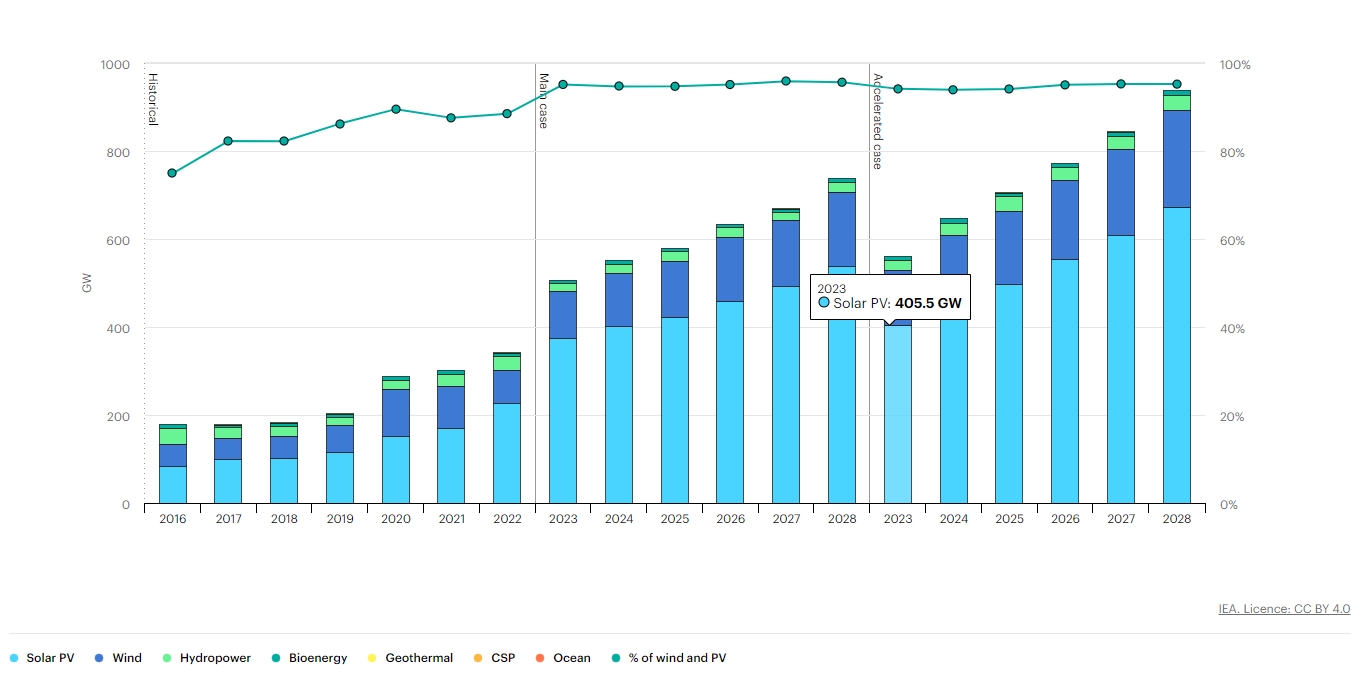The International Energy Agency, headquartered in Paris, France, released the “Renewable Energy 2023″ annual market report in January, summarizing the global photovoltaic industry in 2023 and making development forecasts for the next five years. Let’s go into it today!
Score
According to the report, global new installed capacity of renewable energy in 2023 will increase by 50% compared with the previous year, with newly installed capacity reaching 510 GW, of which solar photovoltaics will account for three-quarters. Judging from the situation of various countries and regions, China’s renewable energy installed capacity growth will lead the world in 2023. China’s newly installed wind energy capacity increased by 66% over the previous year. China’s newly installed solar photovoltaic capacity that year was equivalent to the global solar photovoltaic capacity of the previous year. Add new installed capacity. In addition, renewable energy installed capacity growth in Europe, the United States and Brazil also hit record highs in 2023.
(IEA, Renewable electricity capacity growth in China, main case, 2005-2028, IEA, Paris https://www.iea.org/data-and-statistics/charts/renewable-electricity-capacity-growth-in-china-main-case-2005-2028, IEA. Licence: CC BY 4.0)
Prospect
The report predicts that global renewable energy installed capacity will usher in the fastest growth period in the next five years. Under existing policies and market conditions, global renewable energy installed capacity is expected to reach 7,300 GW between 2023 and 2028. By early 2025, renewable energy will become the world’s leading source of electricity.
Challenge
Fatih Birol, Director of the International Energy Agency, said that although the world is moving towards the goal set by the 28th Conference of the Parties (COP28) of the United Nations Framework Convention on Climate Change, that is, by 2030, the global renewable energy Installed energy capacity has tripled, but under current policies and market conditions, the growth rate of renewable energy is not enough to achieve this goal.
Birol said that onshore wind and solar power currently have cost advantages compared with fossil fuel power generation in most countries around the world. The biggest challenge in achieving the above goals is how to rapidly expand renewable energy in most emerging and developing economies. financing and deployment.
The report also evaluates the development prospects of green hydrogen energy and points out that although many green hydrogen energy projects have been launched in the past 10 years, due to factors such as slow investment progress and high production costs, it is expected that only 7% of the planned production capacity will be actually available by 2030. put into production.
Ruiqifeng provide the material of heat sinks , aluminium solar frames, and mounting bracket systems for solar energy, we will continue to pay attention to the solar energy industry. Feel free to contact us if you have any questions.
Tel/WhatsApp: +86 17688923299 E-mail: aisling.huang@aluminum-artist.com
Post time: Jan-17-2024








